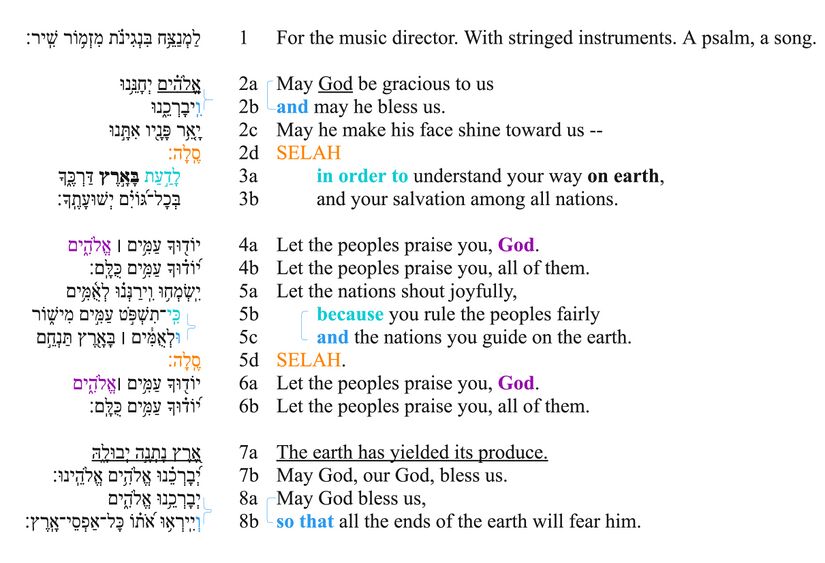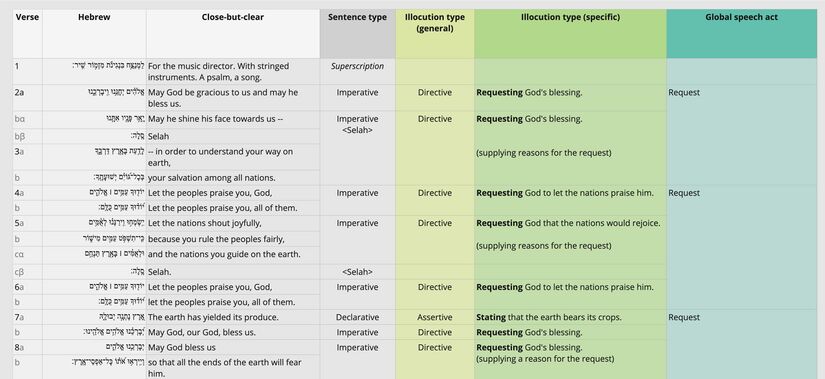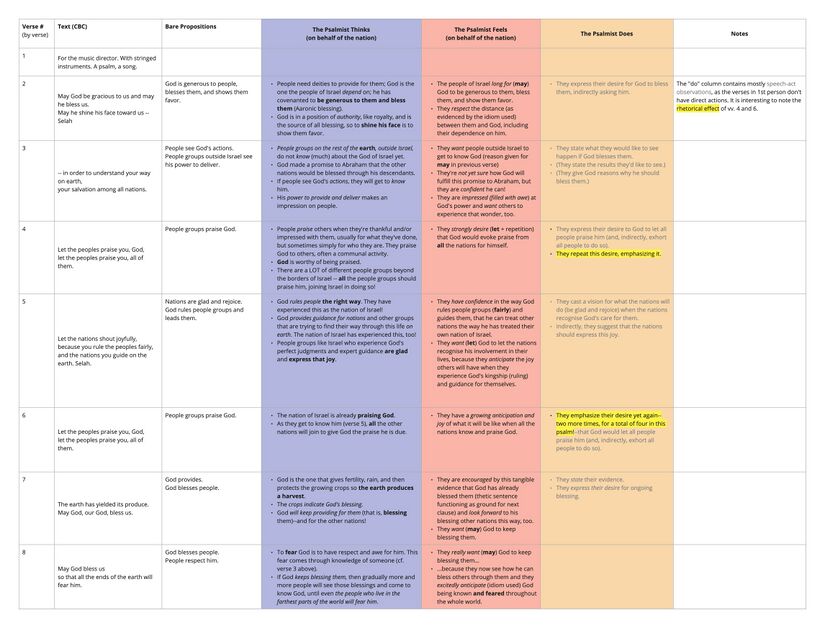Psalm 67 Discourse: Difference between revisions
From Psalms: Layer by Layer
Sarah.Milton (talk | contribs) |
Amanda.Jarus (talk | contribs) No edit summary |
||
| Line 1: | Line 1: | ||
{{LayerbyLayer | {{LayerbyLayer | ||
|Chapter=67 | |Chapter=67 | ||
Latest revision as of 17:00, 9 January 2025
Macrosyntax
(For more information, click "Macrosyntax Legend" below.)
- v.3a: Purpose clause (infinitive construct with lamed).
- v.7a: As thetic, may be taken as grounds for 7b -- that is, because the earth has given its produce, we have good reason to ask him to keep blessing us (and perhaps also that he should keep blessing us, especially if the "produce" is the (praise of) the peoples of the earth)
- v.8b: waw + yiqtol introducing purpose clause
Word Order and Pragmatics:
- 2a: Fronted subject for topic activation
- 3a + b + 5c: notice connection of PP before object
- 3b: Fronted PP = POETIC (defamiliarised WO in line 2 of parallelism) (and true anyway with verb elision)
- 5c: poetic enclosure (The syntax needs to be disentangled from the poetry in v. 5. Even though לאמים is LD and resumed by the suffix on תנחם, we're considering lines b and c a poetic a-bc // bc-a’ mirror structure.)
- 7a: Sentence focus / thetic
- Indications of sentence focus: indefinite and fronted subject
- Function = new "report"
Macrosyntax divisions:
- 2-3: Opening verse but also delineated by topic activation in fronted subject of 2a
- 4-6: Suggested by first vocative of the psalm; introduction of material that will be repeated 4 times in chiastic structure around center; reinforced by movement from subordination to new main clause
- 7-8: Delineated by thetic statement in 7a
Speech Act Analysis
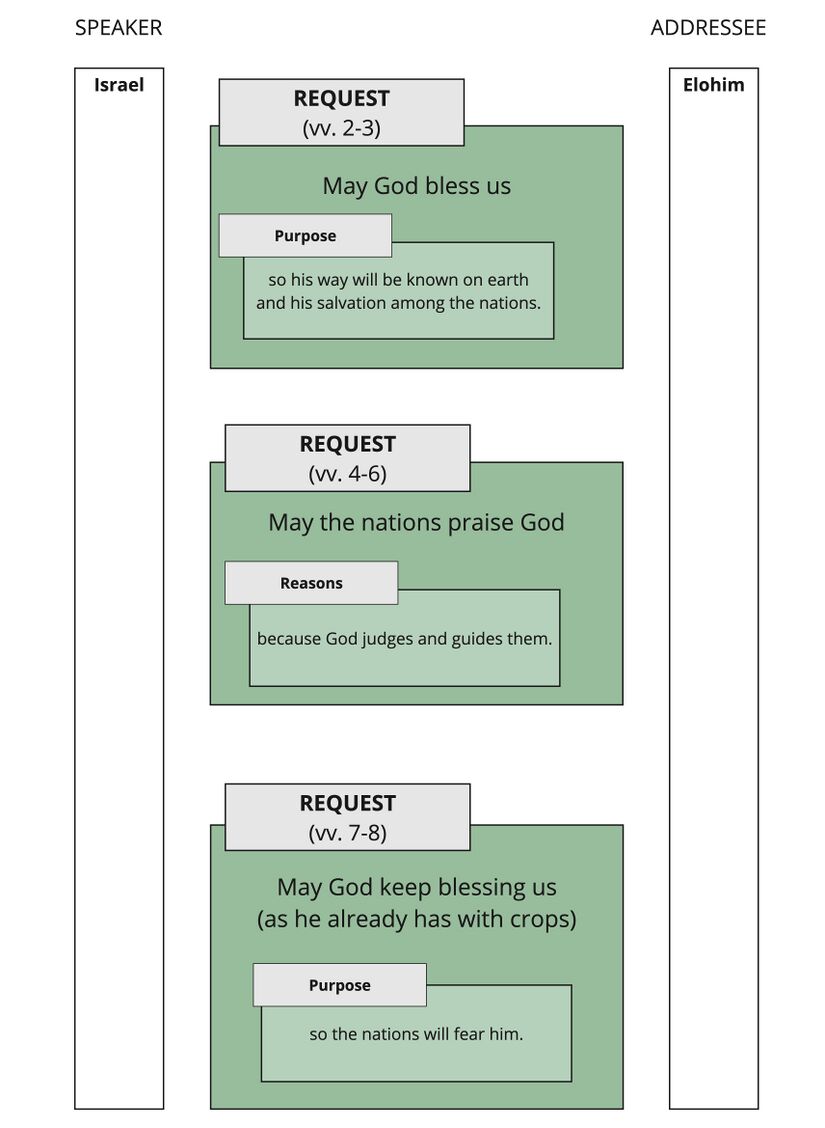
For Visual, click "Expand" to the right
Affect Analysis
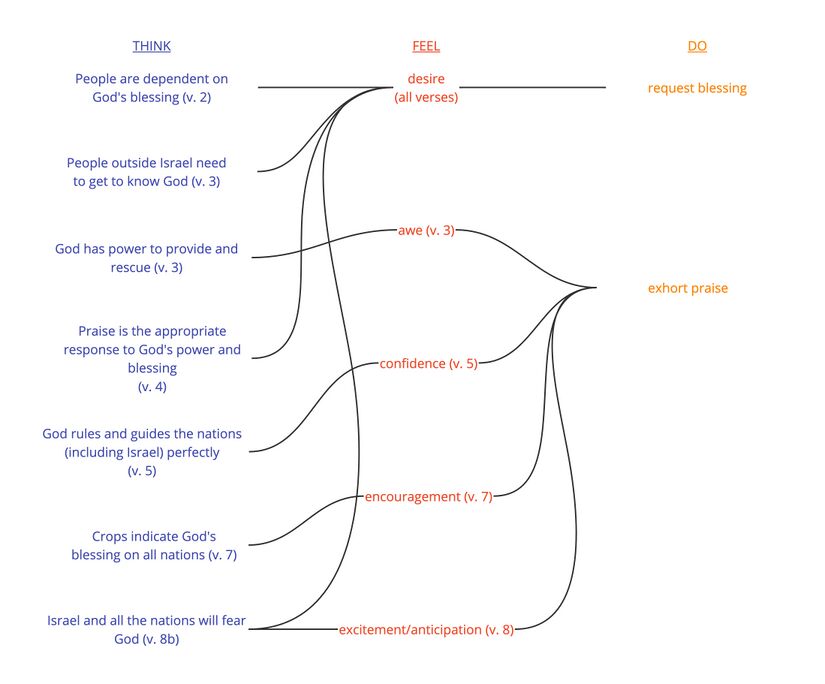
For Visual, click "Expand" to the right
- ↑ When the entire utterance is new/unexpected, it is a thetic sentence (often called "sentence focus"). See our Creator Guidelines for more information on topic and focus.
- ↑ Frame setters are any orientational constituent – typically, but not limited to, spatio-temporal adverbials – function to "limit the applicability of the main predication to a certain restricted domain" and "indicate the general type of information that can be given" in the clause nucleus (Krifka & Musan 2012: 31-32). In previous scholarship, they have been referred to as contextualizing constituents (see, e.g., Buth (1994), “Contextualizing Constituents as Topic, Non-Sequential Background and Dramatic Pause: Hebrew and Aramaic evidence,” in E. Engberg-Pedersen, L. Falster Jakobsen and L. Schack Rasmussen (eds.) Function and expression in Functional Grammar. Berlin: Mouton de Gruyter, 215-231; Buth (2023), “Functional Grammar and the Pragmatics of Information Structure for Biblical Languages,” in W. A. Ross & E. Robar (eds.) Linguistic Theory and the Biblical Text. Cambridge: Open Book Publishers, 67-116), but this has been conflated with the function of topic. In brief: sentence topics, belonging to the clause nucleus, are the entity or event about which the clause provides a new predication; frame setters do not belong in the clause nucleus and rather provide a contextual orientation by which to understand the following clause.
